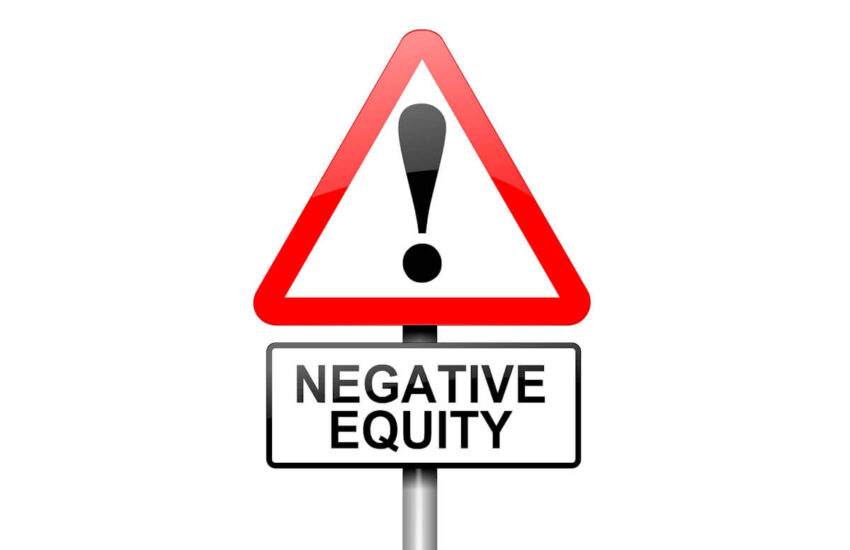Trading in a car when you owe more on it than it’s worth, known as being “underwater” or having “negative equity,” can seem like navigating through a financial storm. However, understanding the mechanisms such as new car rebates, cash down payments, loan-to-value (LTV) lender limits, and the importance of credit scores can turn this tricky situation into a manageable one. This post attempts to answer the question “how to trade in a car with negative equity?” and guide you through the process of by highlighting strategies to mitigate its impact.
Understanding Negative Equity
First, let’s define negative equity: it occurs when the outstanding loan on your vehicle exceeds its current market value. This situation can arise from purchasing a car with a small down payment, the rapid depreciation of the vehicle, or carrying over negative equity from a previous vehicle loan.
Leveraging New Car Rebates and Cash Down Payments
One of the most effective strategies to counteract negative equity is by utilizing new car rebates and making significant cash down payments. Manufacturers often offer rebates on new cars, which can directly reduce the purchase price. When trading in a car with negative equity, applying these rebates to your new vehicle can diminish the amount of negative equity you’re rolling over.
Additionally, a substantial cash down payment can significantly lower the loan amount, thereby reducing the LTV ratio. This not only helps in managing the negative equity but also improves your chances of securing a favorable financing deal.
The Role of Loan to Value (LTV) and Credit Scores
LTV is a crucial factor in car financing, representing the ratio between the loan amount and the value of the vehicle. How much negative equity will a bank finance? Lenders impose limits on LTV ratios, which often depend on the borrower’s credit score. The higher the credit score, the higher the LTV limit, allowing borrowers with good credit to absorb more negative equity than those with poor credit.
This is because lenders perceive borrowers with higher credit scores as lower-risk, thus offering them more leeway when it comes to the amount of negative equity they can roll into a new loan. On the other hand, trading in a car with bad credit and negative equity is more challenging.
Sale Price vs. Market Value: A Crucial Distinction
An essential aspect to consider is the distinction between the sale price of a vehicle and its market value. Lenders base their maximum LTV ratios on the car’s market value, not the sale price. This means if a dealer is selling a used vehicle below its market value, you could potentially absorb more negative equity into a new loan compared to a vehicle selling above market value.
This principle can be advantageous when trading in a car with negative equity. By choosing a vehicle being sold under its market value, you essentially increase the amount of negative equity that can be rolled over into the new loan without exceeding the lender’s LTV limits.
Income Considerations and Vehicle Pricing
Lenders also consider the borrower’s income when determining the feasibility of a loan. Most lenders limit the maximum monthly car payment to 15% of the borrower’s income. This implies that individuals with higher incomes can afford more expensive vehicles. Since LTV is a percentage of the car’s market value, opting for a higher-priced vehicle can theoretically absorb more negative equity, provided the sale is made at or below market value.
However, it’s crucial to approach this strategy with caution. Opting for a more expensive vehicle just to absorb negative equity can lead to larger monthly payments and a longer-term financial burden. It’s essential to balance the desire to manage negative equity with the practicality of future financial obligations.
Wrapping It Up
Trading in a car with negative equity requires a nuanced understanding of financial mechanisms and market dynamics. By leveraging new car rebates, making substantial cash down payments, understanding the implications of your credit score on LTV ratios, and carefully selecting vehicles based on their sale versus market value, you can navigate the complexities of negative equity. Additionally, considering your income in relation to potential vehicle choices is crucial to ensure that you’re not only managing negative equity effectively but also making sustainable financial decisions. With the right approach, trading in a car with negative equity can be a smooth and financially sound process.
AutoByPayment.com offers accurate estimates of new and used car loan payments based on self-selected credit score, current rebates, down payment, and trade equity or negative equity, without customers having to provide their personal identifying information such as email and phone.
